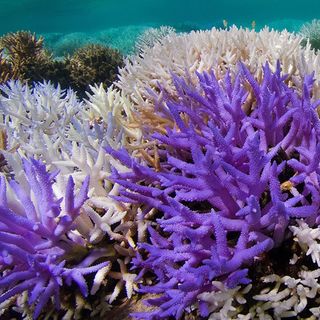A team of scientists have warned that a mass extinction of wildlife is underway — accelerated by man-made threats like climate change and habitat destruction. And, left unchecked, it could cause irreversible damage to ecosystems around the world.
Published yesterday in the journal Proceedings of the National Academy of Sciences, the study traced the data available on 29,400 terrestrial vertebrate species by the IUCN Red List of Threatened Species and BirdLife International. 515 of these species, including mammals, birds, reptiles and amphibians, are from tropical and subtropical regions of the planet, and were found to be critically endangered with fewer than 1,000 individuals remaining. In fact, about half of these 515 species have fewer than 250 individuals left. If this isn’t addressed urgently, all 515 of these species are likely to be lost within 20 years — a rate of loss that would have taken thousands of years otherwise, without human interference with, and destruction of, nature.
The animals on the brink of extinction, with fewer than 1,000 individuals remaining, include the Sumatran rhino, the Clarión wren, the Española giant tortoise and the harlequin frog. “We’re eroding the capabilities of the planet to maintain human life and life in general,” Professor Gerardo Ceballos, an ecologist and conservationist at the National Autonomous University of Mexico, and a co-author of the study, told The New York Times. The researchers blamed rising human population, destruction of habitats, wildlife trade, pollution and the climate crisis for the impending sixth mass extinction of wildlife on Earth. They also cited the ongoing Covid19 pandemic related to wildlife trade as an example of how human pressures on the biosphere is on the rise.
Related on The Swaddle:
Climate Change Is Turning Antarctica’s Snow Green
“When humanity exterminates other creatures, it is sawing off the limb on which it is sitting, destroying working parts of our own life-support system. The conservation of endangered species should be elevated to a global emergency for governments and institutions, equal to the climate disruption to which it is linked,” Professor Paul Ehrlich, American biologist and President of Stanford University’s Center for Conservation Biology, told The Guardian.
Further, the scientists also warned of a domino effect — close ecological interactions of species on the brink tend to move other species toward annihilation when they disappear. Essentially, the loss of one species, tips others that depend on it, over the edge. “Extinction breeds extinctions,” the paper warned, adding that unlike a host of other environmental issues, extinction is irreversible.
“If we stop the land-grabbing and devastating deforestation in countries such as Brazil, we can start to bend the curve in biodiversity loss and climate change,” Mark Wright, the director of science at WWF, said. “The biodiversity crisis is real and urgent. But — and this is the crucial point — it is not too late. To transition to a sustainable world, we need to tread more lightly on the planet. Until then, we are essentially robbing future generations of their inheritance,” Professor Andy Purvis, Research Leader of the Department of Live Sciences at the Natural History Museum in London, who was not involved in the study, concurred igniting hope.




